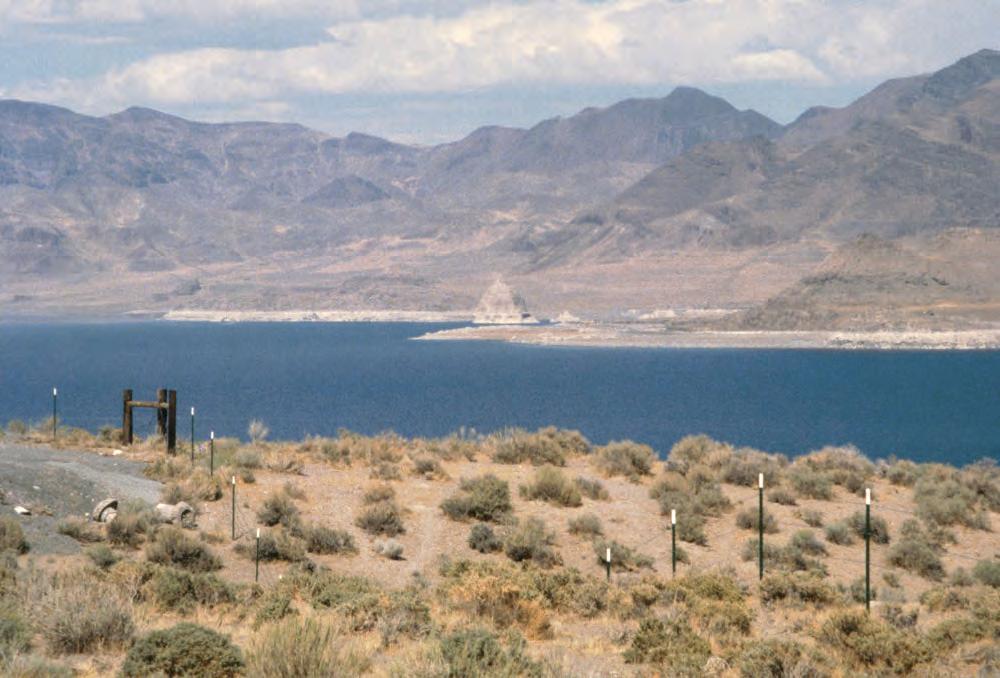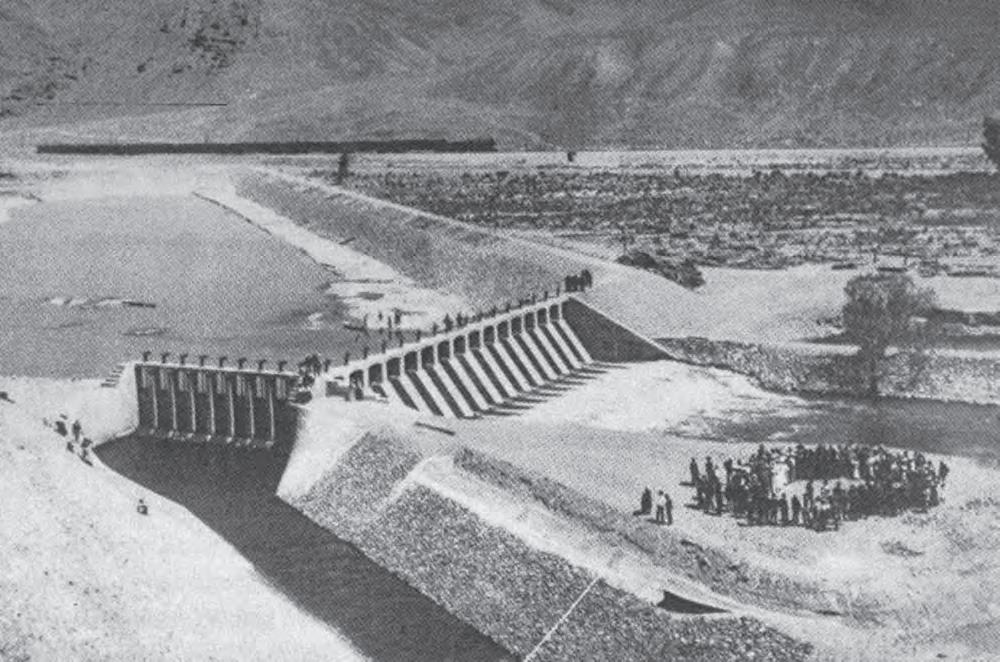
6 minute read
Who owns the water from Lake Tahoe & Truckee River? Part IV
Who owns the water from Lake Tahoe & Truckee River? PART V
BY MARK M c LAUGHLIN
Advertisement
President eodore Roosevelt wanted to see quick action on the new federal irrigation bill. Prior to 1902, private landowners perfected water rights to the Truckee and Carson rivers in accordance with Nevada law (“perfected” meaning that permitted water satis ed the Bene cial Use requirement as described in Part IV of the series).
State bring suit, before the
Supreme Court of the United
Senior o cials from the U.S. Reclamation Service visited Reno and Carson City where they promised that generous government funds would be forth coming for the nancially depressed Silver State, but there was a catch. To get the money Nevada’s government had to enact a statute that subordinated the State Water Engineer’s O ce to the new federal agency. e full-court press worked and in 1903 Nevada passed the requested measure that relinquished power to control water rights in the state, including its problematic claims at Lake Tahoe and in the Truckee River and Carson River watersheds. e Bureau of Reclamation’s strong hand and bold plans concerning the appropriation of Lake Tahoe water and other California hydrological resources for aggressive agricultural expansion in Nevada (the driest state in the nation) enraged California’s residents and politicians. e government agency understood its controversial and delicate position. Its rst annual report stated: “ e situation in Nevada is further complicated by the fact that much of its water supply comes from the State line on the west. us, to utilize the spring oods it will be necessary to construct reservoirs in California and take the waters out upon lands in Nevada.”
Under the auspices of the TruckeeCarson Irrigation Project, modern dams and reservoirs on the Truckee River system were developed at Donner Lake, as well as at Independence and Webber lakes. Dams were also proposed near Henness Pass, Dog Valley and even one for Squaw Creek in Olympic Valley — but these were never built. Constructed primarily for ood protection, Boca, Prosser and Stampede reservoirs would come later. On the Carson River, Long Valley and Hope Valley were targeted. Starting in 1909 the original plank outlet dam built at Tahoe City by the Donner Lumber and Boom Company was removed and replaced by a concrete slab and buttress structure similar to the dam there today. e current dam can store up to 6 feet 1 inch of water in the Tahoe Basin, about 750,000 acre feet, the most of any reservoir within the Truckee River drainage.
In 1913, construction of the concrete Tahoe Dam was completed and in litigation known as the U.S. v. Orr Water Ditch, the federal government claimed a diversion of 10,000 cubic feet per second (cfs) for the Newlands Project and a small pass-through amount of 500 cfs for the Pyramid Lake Indian Reservation. Lakefront owners at Tahoe again protested that excessively high storage levels behind the dam were impacting property values and business (resorts) interests. To increase their political clout, a group of prominent landowners created Lake Tahoe Protection Association to preserve the lake’s beauty and ecology, while simultaneously securing their vested interests. e California Conservation Commission also voiced concern: “ e waters of Lake Tahoe are too valuable an asset, from every point of view, to permit them to be diverted, without established limit, into any other state. For, if they are to be so diverted, it will be di cult, if not impossible for California to recover her proper share of them. e Conservation Commission, therefore, recommends as strongly as it can, that this State bring suit, before the Supreme Court of the United States, against the State of Nevada to have the waters of Lake Tahoe equitably apportioned to and between the two states.” e bold statement was the opening salvo in California’s legal attempts to keep Lake Tahoe water rights within the state.
Court battles between California, Nevada and the Bureau of Reclamation, along with other entities, had commenced and would last for decades, but by then substantial work on the Truckee-Carson Irrigation Project had been underway for 10 years. e elaborate undertaking, dubbed the Newland’s Reclamation Project, would provide Sierra water to four western Nevada counties: Washoe, Churchill, Storey and Lyon. e key mechanism to this historic and complex water transport system was an unlined ditch to siphon water from Truckee River via Derby Diversion Dam — built 20 miles downstream of Reno — and transfer it 32 miles south to the Carson River. Completed in 1905, the Truckee Canal was constructed using primitive wooden plows pulled by horse and mule. is exceedingly porous berm and trench conveyance still transports highquality drinking and irrigation water from Truckee River to the far distant lower Carson River basin. Ironically, one of the principal commodities produced in the desert by this redirected water is dehy-

Pyramid Lake is enclosed within the Paiute Tribe’s reservation. | Mark McLaughlin
Dedication of Derby Dam, circa 1905. | Courtesy California Dept. of Water Resources
drated milk products, most of which is exported to Asia and China. e Newlands’ Project transformed the Lahontan Valley — one of the driest parts of the country that receives about 4 inches of annual precipitation — into productive farmland. In litigation known as the U.S. v. Orr Water Ditch that was based on an 1859 prior appropriation right in Nevada, the federal government claimed a diversion of 10,000 cfs from Truckee River at the Derby Dam and a pass-through amount of 500 cfs for the Pyramid Lake Indian Reservation. Paiutes were trying to exist by commercially harvesting sh from their reservation downstream at the terminus of Truckee River. In 1915, a federal court awarded the Bureau of Reclamation an easement to operate the Tahoe Dam along with the responsibility to meet downstream ow rates. But this informally named Truckee River General Electric Decree did not resolve anxiety by lakefront owners at Lake Tahoe and other water-right holders. ere were many concerns regarding this massive shell game being played with California’s water, but the federal reclamation agency assured everyone that there was plenty for all users on the Truckee River system. Unfortunately, the engineers overestimated the reliability of the Truckee River water supply. Contractual obligations for water were predicated on anomalous values derived from early years of the 20th Century that were wetter than average. e Newlands Project was designed during a period of above-average precipitation, water metrics that were not matched or even approached during the droughtstricken 1920s and 30s. e challenge of delivering promised water was exacerbated by political pressure to keep expanding the irrigated acreage served by the project. Erratic periods of precipitation and river ow, combined with limited upstream storage, failed to accommodate the demand.
Angry farmers in Nevada who had been lured to the project rebelled over water
shortages during the growing season that threatened their livelihood. And it wasn’t just farmers. e Pyramid Lake Paiute Tribe, which saw their historic water supply hijacked by newcomers, viewed it as an existential peril.
Stay tuned for the conclusion of the series in the next edition or at eTahoeWeekly.com.
Read the fi rst four parts in the series at TheTahoeWeekly.com



